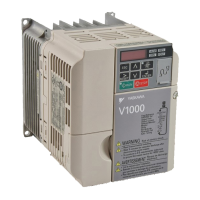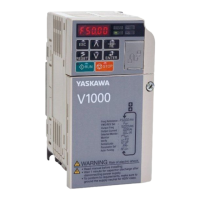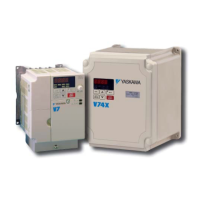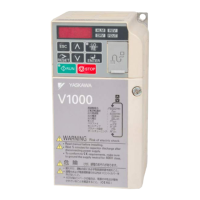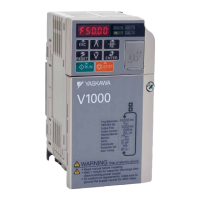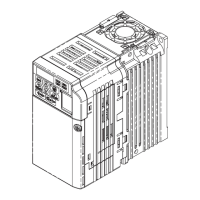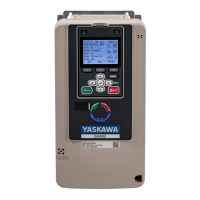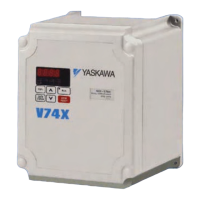B.2 Parameter Table
346 YASKAWA TM.V1000.01 V1000 Drive Installation & Start-Up Manual (Preliminary 01-19-07)
C3: Slip Compensation
Use C3 parameters to configure the slip compensation function.
C3-01
<22>
Slip Compensation
Gain
This parameter is used to increase motor
speed to account for motor slip by boosting
the output frequency. If the speed is lower
than the frequency reference, increase C3-01.
If the speed is higher than the frequency
reference, decrease C3-01.
Note: Adjustment is not normally required.
When operating in Open Loop Vector (OLV),
this parameter works as a function to set the
proper amount of gain.
0.0 to 2.5
0.0
<2>
AA− 20F —
C3-02
Slip Compensation
Primary Delay Time
This parameter adjusts the filter on the output
of the slip compensation function. Increase
to add stability, decrease to improve
response.
This parameter rarely needs to be changed
from its default setting.
Make changes to this parameter as follows:
Decrease the setting when the slip
compensation response is too slow.
Increase this setting when the speed is not
stable.
This parameter is disabled when using
Simple PG in V/f Control (H6-01 = 3).
0 to
10000
2000
ms
<2>
AA− 210 —
C3-03
Slip Compensation
Limit
This parameter sets the upper limit for the
slip compensation function. It is set as a
percentage of motor rated slip (E2-02).
This parameter is disabled when using
Simple PG in V/f Control (H6-01 = 3).
0 to 250 200% A A − 211 —
C3-04
Slip Compensation
Selection during
Regeneration
Sets slip compensation function during
regenerative operation.
0: Disabled
1: Enabled
When using the Slip Compensation function
during regeneration, a braking option (a
Braking Resistor, Braking Unit, or Braking
Resistor Unit) might be needed to handle the
large momentary increase in regenerative
energy.
0,1 0 A A − 212 —
No. Name Description Range Def.
Control
Mode
Addr.
Hex
Pg.
V/
f
O
L
V
P
M

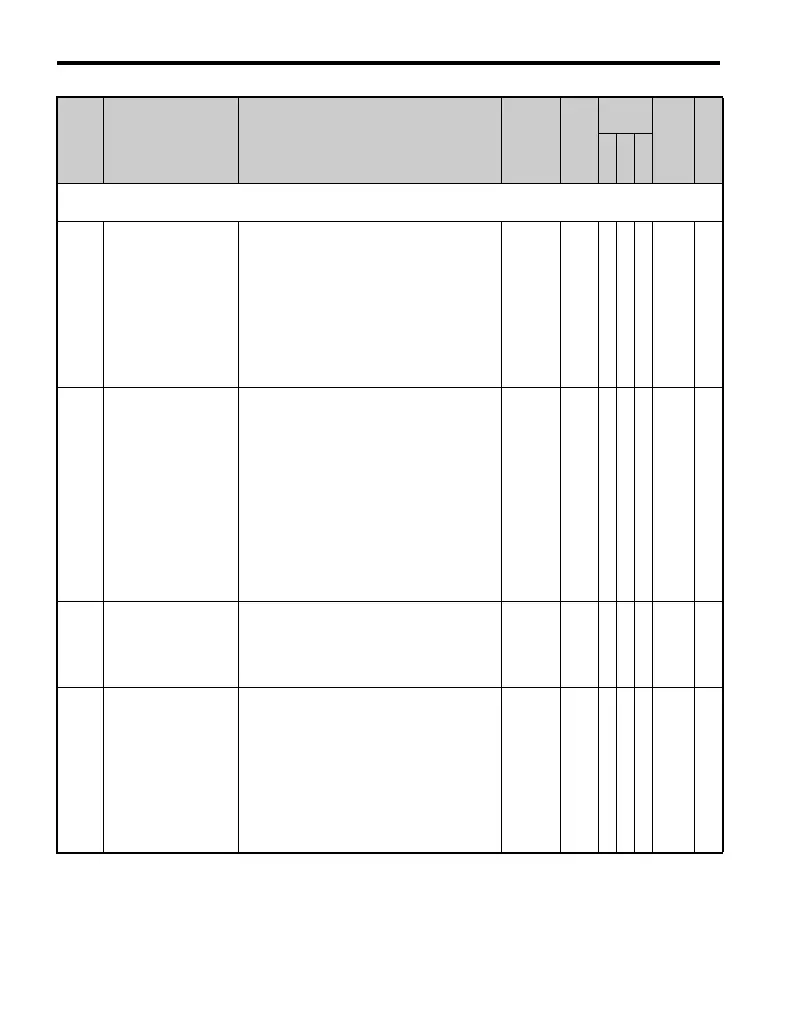